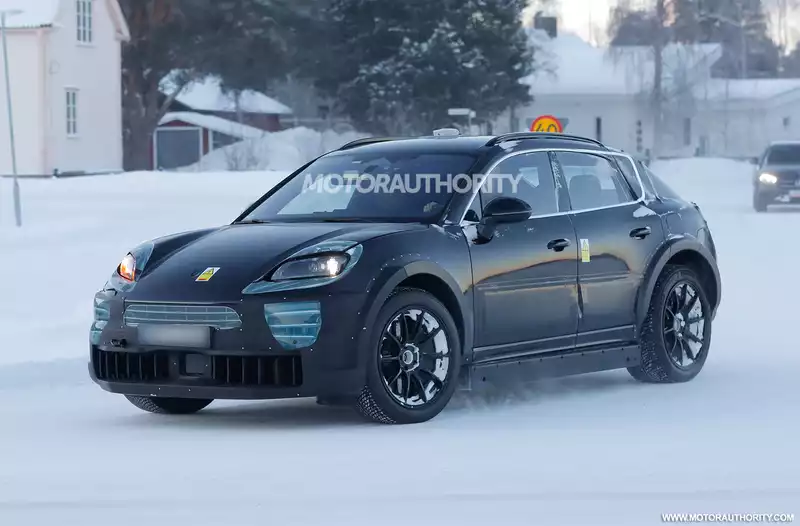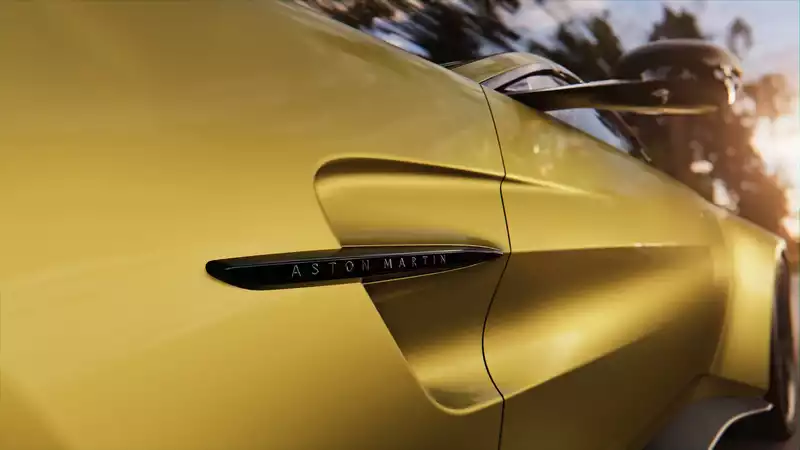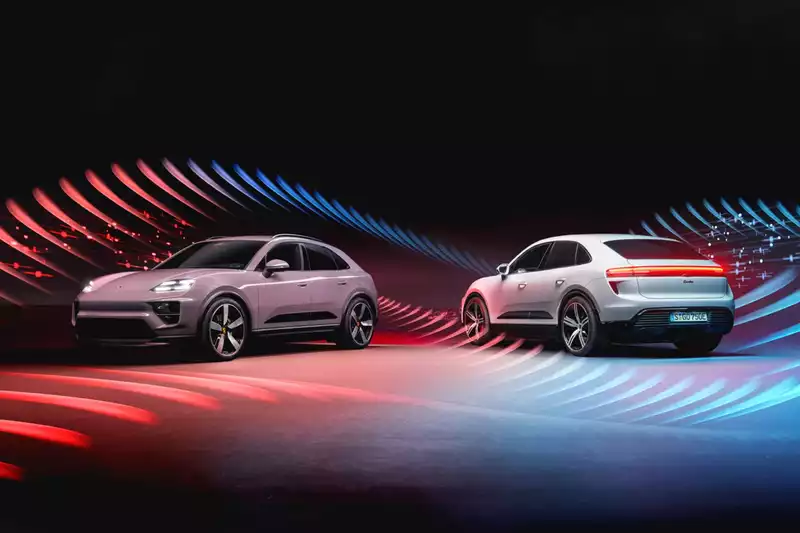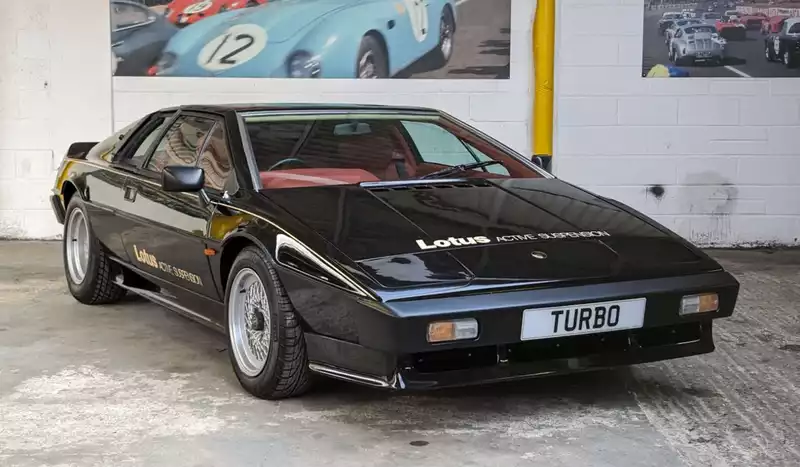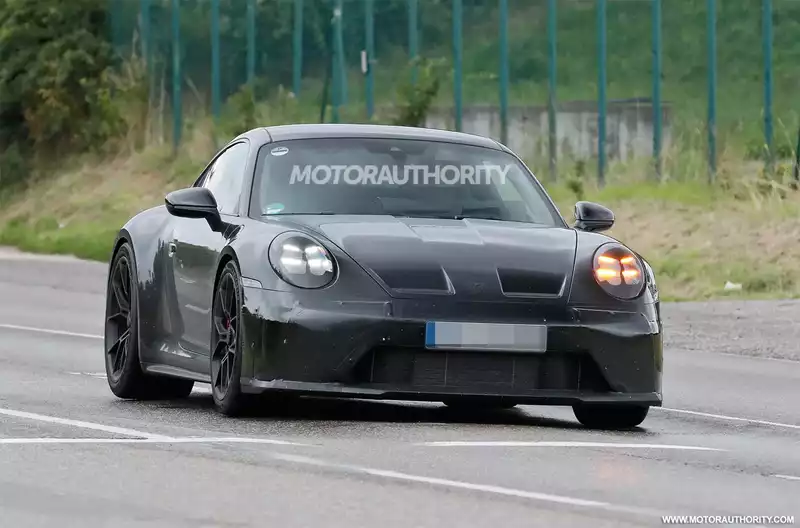Mercedes-Benz is testing the Drive Pilot automatic parking and hands-free system in the United States.
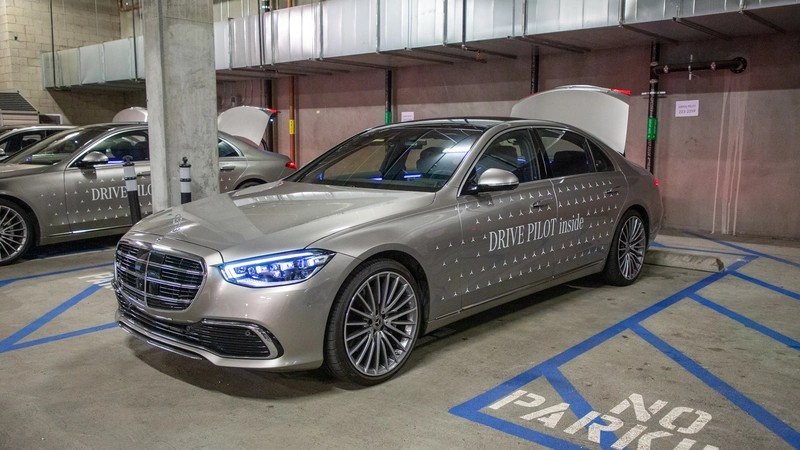
If it seems like Europe is getting all the cool cars, it's because it's sort of true. More wagons, more diesel powertrains, and better safety technology than in recent history. But as Mercedes-Benz showed in a series of technology demonstrations in Los Angeles last week, that may be changing in the US.
The systems demonstrated push Mercedes-Benz from its current Level 2 autonomous driving assistance system to Level 3 and Level 4. This also means that in either case, Mercedes-Benz, not the driver, would be liable in the event of a collision.
Level 3: DrivePilot
DrivePilot is the name Mercedes has given to its Level 3 autonomous driving system, which was approved for use in Germany last December and will be available in the S-Class sedan this year. An EQS electric hatch is expected to follow, but the timing is still unknown.
Mercedes is currently authorized to test this system in California and Nevada. I rode in a modified S-Class to test the system from the passenger seat with Michael Decker, Mercedes' manager of automated driving research and development, who developed the system. After a cursory review of the car's sensor and camera upgrades, we left Santa Monica late at night in search of traffic.
Since the system only works below 40 mph, we would be looking for traffic instead of avoiding it, as Angelenos usually do. In Germany, the law limits the speed to 60 mph, and in the U.S. there is no such limit, but Mercedes says it is comfortable starting out with this system and hopes to eventually expand it to work on highways, similar to GM's Super Cruise and Ford's Blue Cruise, the system only works on mapped divided highways. Mercedes has partnered with Chicago-based Here, which provides road maps for the system in the U.S. and Europe.
More hardware has been added around the S-Class to drive this system. These include road surface moisture sensors mounted in the wheel wells to detect possible changes in stopping conditions due to rain or wet roads, ultrasonic sensors, a LiDAR unit mounted in the front, and an antenna array mounted toward the back window. The antenna array is connected to a satellite, which helps locate the vehicle's position on the road to the nearest centimeter. According to Decker, the system is so sensitive that it can calculate continental drift in real time. The two cameras around the rear-view mirrors are also wider so that the system can provide a more accurate 3D image of what is happening around the car. In addition, the tester car had what looked like a server rack in the trunk to record the data collected by the system.
Having found the traffic jam on the reliably busy Interstate 10, it was time to turn on the system. Activated by one of two buttons on the steering wheel, the system lights up white when the system's conditions are met. When the system is activated, its light turns turquoise and another turquoise indicator at the top of the steering column lights up and the car takes over the system.
During the 15 minutes or so that we drove in traffic in this car, there was little drama, but when an emergency vehicle passed us from the opposite direction, the system shut off and asked the driver to take over. It followed straight on in our lane and started and stopped smoothly. The automatic lane change feature that some Level 2 systems perform automatically is not yet available, but Mercedes says it will be eventually. If a road sign cannot be detected, the car will continue driving for six to seven seconds, reacquire its location, and then stop.
In order to maintain automatic driving mode, the driver must meet several conditions. It is not possible to get into the back seat, and if you try to lie down with the seat back, a message pops up telling you that the system will turn off if you are not within reach of the pedals and wheels. The driver's attention must be fixed on what the car considers the "driver attention zone," an area that includes the infotainment screen (during our drive, Michael was playing a YouTube video) and most of the dashboard. If the driver's camera detects the driver talking to the passenger or looking into the backseat for 30 seconds, it will prompt the driver to turn around and stop after another 30 seconds.
Exiting automatic mode takes more effort than deactivating a Level 2 system such as adaptive cruise control, which turns off when the driver hits the brakes. The system determines if the brakes are applied more strongly than the system expects under certain circumstances (much more than a simple tap) and turns off. If you reach out from the passenger seat, you have to pull very hard to disengage the system. Either way, you would not inadvertently turn it off.
According to Mercedes, it has been tested over 50,000 miles so far in California and Nevada. Poor thing. Mercedes says this is the next step for this system.
Pricing for additional features and equipment has not yet been announced, but thankfully Mercedes has indicated that the system will not use a subscription model, with only a fixed initial cost at the time of vehicle purchase. Mercedes also noted that at this time it is the only legacy automaker testing this type of system in California and Nevada, and is taking the lead in gaining regulatory approval. Once that happens, the floodgates will open and other brands will try to catch up as quickly as possible.
The main difference between this Level 3 system and the Level 2 and above systems offered by other automakers (such as Blue Cruise, Super Cruise, and Tesla's Autopilot) is that Mercedes will be responsible if the car crashes while the system is in operation. With other systems, the responsibility lies with the driver.
There is one factor that could complicate things: Mercedes must be approved state by state, with no federal regulations for this technology. In other words, there is a scenario where an EQS or S-Class will drive automatically on the highway, but when entering another state, the driver must take over driving.
Level 4: Automated Valet Parking
Taking this system one step further was an automated valet parking system displayed in a hotel parking lot in downtown Los Angeles. The system was jointly developed by Mercedes-Benz and automotive supplier Bosch and is already in use at Stuttgart Airport, but this is the first time it has been used in the United States
. The system then checks, via a Mercedes smartphone app, whether the parking space is reserved or available, and prompts the driver to hand over the vehicle. With a further tap on the screen, the vehicle moves (slowly) on its own to a parking spot in the facility.
In the demo, the process of getting out of the vehicle, checking the parking space, and driving away took about 45 seconds and appeared very seamless. It then took about a minute for the car to move several hundred feet through the garage and reverse into a spot next to another parked vehicle. It should be noted that Bosch installed the sensors in the parking garage to guide the car into the space, not the car's safety system or sensors. The major drawback of this system is the need to install Bosch hardware and sensors to make it work.
The whole thing looked cumbersome in the hotel parking lot, with about 20 LiDAR sensors lined up on a metal plate along the route the vehicle (in this case, an EQS) would take to the parking lot. However, Bosch representatives assured us that this setup was only for this demonstration, because it was a temporary location. In Stuttgart, there are no ground sensors, only stereo cameras mounted on the ceiling, making the entire setup nearly transparent.
The same process occurs when the driver wants the car to come back. When the driver calls the car back using the smartphone app, the car turns on and returns to the drop-off location. After that, all he has to do is get in and drive.
The difference between this system and Tesla's Park and Summon feature is that it does not require the driver to be present. Currently, Tesla's feature requires the driver to be within about 10 feet of the car to watch it drive. The system is designed to allow the car to operate more independently, and even in this application, if something goes wrong, the company, not the driver, would be responsible.
Parking lots and valets seem to be very limited applications for this technology. While it may be attractive to some luxury car buyers, the larger application of this type of system seems to be commercial. Whether at a car rental counter or at a commercial shipping hub where people operate vans and trucks and have drivers load and unload goods, this system would allow for more constant loading and unloading of goods.
Mercedes and Bosch are also awaiting regulatory approval of the system in the U.S. and hope to find infrastructure partners to facilitate its installation. However, both of these technologies are exciting steps toward the expansion of self-driving technology.
.